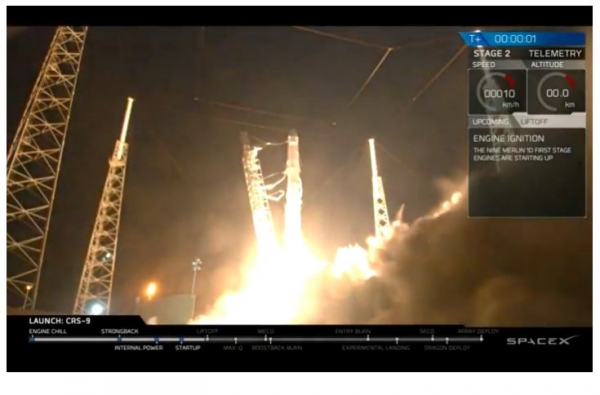SpaceX takes another shot at launching station docking port
“A really good day”, Hans Koenigsmann, vice president of flight reliability for SpaceX said in a statement.
The Falcon rocket was launched into orbit earlier this morning in Florida and is carrying 2,267kg of supplies in a Dragon space capsule including a new-style space station docking port designed for the ISS.
Also aboard the Dragon is the docking adapter, the second one SpaceX has attempted to deliver to the ISS.
Managing to get that docking port up to Nasa marks a major step for SpaceX, and helps reassure the company after an accident previous year that saw it blow up over the Atlantic and bring a temporary end to such missions.
Among the CRS-9 mission cargo is an International Docking Adapter, or IDA, that will provide a vital link between the International Space Station and the new spacecraft in development with NASA’s Commercial Crew Program.
The Dragon’s cargo included the new docking station that will be used when SpaceX and Boeing begin bringing astronauts up to the space station in a couple of years. The pair would dock to this ring and another due to fly in a year. The Dragon and its latest shipment are expected on Wednesday at the 250 mile high outpost.
NASA ISS programme manager Kirk Shireman said: “Each commercial resupply flight to the space station is a significant event”. But for this launch, the mission requirements allowed for a successful landing on ground.
SpaceX made history by scoring a double success – launching a crucial docking adaptor in space and accomplishing its first rocket landing on solid ground. SpaceX employees at company headquarters in Hawthorne, California, cheered loudly and applauded when the 15-story booster touched down smoothly. The Falcon 9 often can not carry enough fuel to make it all the way back to dry land during launches to geostationary transfer orbit (which lies 22,300 miles, or 35,890 kilometers, from Earth) and other distant destinations, SpaceX representatives have said. Boosters are normally ditched at sea.
CEO of the company Elon Musk tweeted out shortly after the most recent landing, claiming that the first post-landing inspection of the rocket looked good and that the booster could likely fly again soon.
To fix the $26-million IDA in position, two American astronauts will perform a spacewalk in August to install a ring-like connector measuring 1.5 meter in diameter and about one meter tall.








